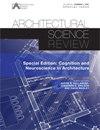间歇运行的高占用率建筑在降低能耗的情况下可接受的室内空气质量
IF 1.8
3区 艺术学
0 ARCHITECTURE
引用次数: 2
摘要
在具有间歇性和短暂占用事件的高占用率建筑中,占用者及其活动是污染物的主要来源,因此不需要连续通风来实现可接受的室内空气质量(IAQ)。由于推荐的通风率占供应空气的很大比例,因此在未占用时段减少或停止通风可节省大量能源。本研究旨在使用CONTAM(室内空气质量和通风分析程序)和Visual DOE(能量分析程序)评估具有不同通风策略和占用方案的高占用率建筑的室内空气质量,以节约能源。结果表明,间歇运行通风1 与连续通风策略相比,在入住前一小时,礼堂节省了25%,清真寺节省了33%。具有通风1的间歇操作策略 入住前一小时也显示出可接受的二氧化碳水平(<1000ppm),而甲醛(HCHO)水平随着通风率的增加而降低,因为人类对室内HCHO浓度的贡献微不足道。本文章由计算机程序翻译,如有差异,请以英文原文为准。
Acceptable indoor air quality at reduced energy consumption for high-occupancy buildings with intermittent operation
In high-occupancy buildings with intermittent and short-occupancy events, occupants and their activities are the primary sources of contaminants, rendering continuous ventilation unnecessary for achieving acceptable indoor air quality (IAQ). Because the recommended ventilation rate constitutes a substantial percentage of the supply air, reducing or discontinuing ventilation during unoccupied periods saves significant energy. This study aims to assess the IAQ of high-occupancy buildings with different ventilation strategies and occupancy schemes to conserve energy using CONTAM (IAQ and ventilation analysis program) and Visual-DOE (energy analysis program). The results show that intermittently operating the ventilation 1 hour before occupancy saves 25% in the auditorium and 33% in the mosque compared to the continuous ventilation strategy. The intermittently operated strategy with ventilation 1 hour before occupancy also revealed an acceptable CO2 level (<1000ppm), while the Formaldehyde (HCHO) levels decreased with increasing ventilation rates, as humans’ contribution to the HCHO concentration indoors was insignificant.
求助全文
通过发布文献求助,成功后即可免费获取论文全文。
去求助
来源期刊

Architectural Science Review
ARCHITECTURE-
CiteScore
4.80
自引率
8.70%
发文量
34
期刊介绍:
Founded at the University of Sydney in 1958 by Professor Henry Cowan to promote continued professional development, Architectural Science Review presents a balanced collection of papers on a wide range of topics. From its first issue over 50 years ago the journal documents the profession’s interest in environmental issues, covering topics such as thermal comfort, lighting, and sustainable architecture, contributing to this extensive field of knowledge by seeking papers from a broad geographical area. The journal is supported by an international editorial advisory board of the leading international academics and its reputation has increased globally with individual and institutional subscribers and contributors from around the world. As a result, Architectural Science Review continues to be recognised as not only one of the first, but the leading journal devoted to architectural science, technology and the built environment. Architectural Science Review publishes original research papers, shorter research notes, and abstracts of PhD dissertations and theses in all areas of architectural science including: -building science and technology -environmental sustainability -structures and materials -audio and acoustics -illumination -thermal systems -building physics -building services -building climatology -building economics -ergonomics -history and theory of architectural science -the social sciences of architecture
 求助内容:
求助内容: 应助结果提醒方式:
应助结果提醒方式:


